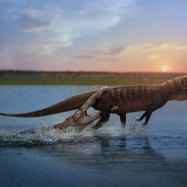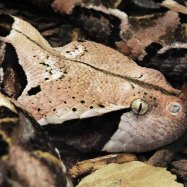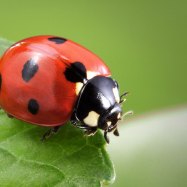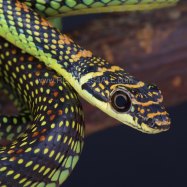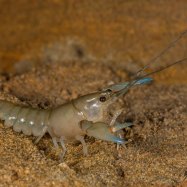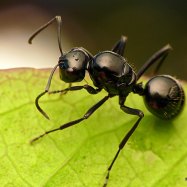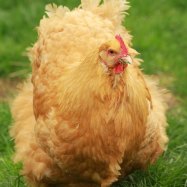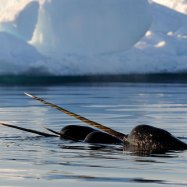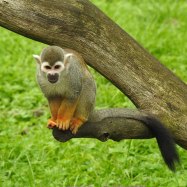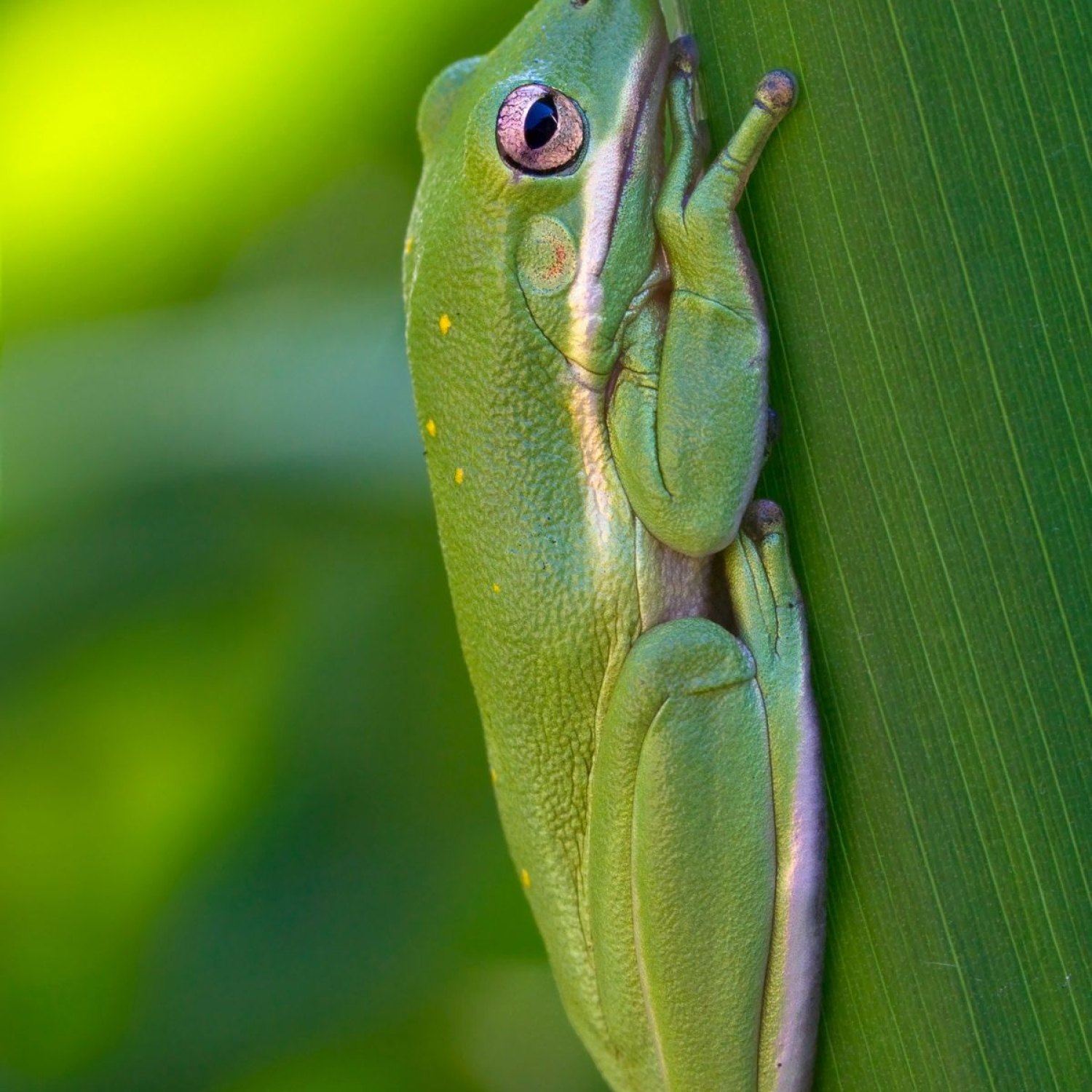
Green Frog
2.5 - 4 inches (6.4 - 10.2 cm)
Learn more about the fascinating Green Frog, commonly found in the Eastern United States and parts of Canada. With a slender and streamlined body, it can grow up to 4 inches in length. Belonging to the Ranidae family, these amphibians are excellent jumpers and have powerful hind legs. Spot them in ponds and wetlands, where they catch their prey with their long tongues. #GreenFrog #Amphibians #Ranidae #EasternUS #Canada
Animal Details Summary:
Common Name: Green Frog
Kingdom: Animalia
Habitat: Freshwater habitats such as ponds, lakes, marshes, and slow-moving streams
The Mighty Green Frog: A Fascinating Amphibian of North America
The world is home to a plethora of breathtaking creatures, each with its unique behavior and characteristics. Among these creatures is the green frog, known for its striking green color and loud croaking. But there's more to this amphibian than meets the eye. In this article, we'll dive into the fascinating world of the green frog, exploring its scientific name, habitat, feeding habits, geographical distribution, and more Green Frog. So buckle up and join us on this journey to discover the mighty green frog.The Scientific Name and Common Name of the Green Frog
The scientific name of the green frog is Lithobates clamitans, derived from the Greek words "Lithos," meaning stone, and "bates," meaning walker. This name is fitting for this frog as it is known to hop and walk on stones and rocks in its habitat. This species is also commonly known as the green frog or the bronze frog due to its green to brown coloration.The Classification of the Green Frog
The green frog belongs to the kingdom Animalia, which includes all animals. It falls under the phylum Chordata, which includes animals with a backbone or spinal cord. Like all amphibians, the green frog belongs to the class Amphibia, meaning it spends part of its life in water and part on land. This class includes frogs, toads, salamanders, and caecilians.The green frog belongs to the order Anura, meaning "without a tail," which includes over 7,000 species of frogs and toads Green June Beetle. It belongs to the family Ranidae, or "true frogs," which includes over 400 species of frogs found all over the world.
The Habitat of the Green Frog
One of the most notable features of the green frog is its habitat. These frogs can be found in various freshwater habitats, such as ponds, lakes, marshes, and slow-moving streams. They are most commonly found in shallow water, where they can easily hide in the vegetation and hunt for prey.Due to their semi-aquatic nature, green frogs have adapted to live both in and out of the water. They have special glands that allow them to absorb oxygen through their skin, making it easier for them to stay submerged for extended periods. They also have webbed toes that help them swim and jump efficiently.
The Feeding Method of the Green Frog
The green frog is a carnivorous species, meaning it feeds on other animals. As tadpoles, they primarily feed on algae and other aquatic plants. But as adults, they switch to a diet of insects, spiders, worms, small fish, and even other frogs. They are known to be opportunistic predators, meaning they will eat virtually anything that moves and fits in their mouth.Their hunting technique is quite fascinating. Green frogs use their powerful hind legs to jump and catch their prey. They have excellent eyesight and can detect movement from a distance, making them efficient hunters. Their sticky tongue helps them catch and swallow their prey in one quick motion.
Geographical Distribution and Country of Origin
The green frog is native to North America and is found in the United States and Canada. Its range extends from the eastern United States to parts of Canada, including Ontario and Quebec. They are particularly abundant in the Great Lakes region, the southern and eastern United States, and parts of the Midwest. They are also found in some areas of the Eastern Seaboard and the Appalachian Mountains.Physical Characteristics of the Green Frog
The green frog is easily recognizable due to its distinct green to brown coloration. They can vary in shade and can appear bright green, olive, or brown, depending on their surroundings. They also have light-colored bellies and sometimes have darker spots or patches on their backs.Green frogs have a slender and streamlined body shape, which makes them efficient swimmers and jumpers. They have long, muscular hind legs, which allow them to make high jumps and move swiftly in the water. Their front legs are shorter and used for climbing and grasping their prey.
On average, green frogs can grow up to 2.5-4 inches (6.4-10.2 cm) in length. However, females tend to be larger than males. They have smooth, moist skin, which helps them stay cool and absorb oxygen. This skin also secretes a slimy mucus that protects them from predators and keeps their skin moist.
The Life Cycle of the Green Frog
The life cycle of the green frog is similar to that of other frogs. They start their life as eggs, which are laid in the water by the female. These eggs then hatch into tadpoles, which have gills and live exclusively in the water. During this stage, they primarily feed on aquatic plants and algae.After around 6-9 weeks, tadpoles undergo a process called metamorphosis, where they undergo significant physical changes and develop into adult frogs. During this stage, they lose their gills and develop lungs, legs, and a tail. They also start to develop their distinct coloration and patterns.
Once the transformation is complete, the young frogs leave the water and enter the next stage of their life. They are now fully adapted to life on land, and their diet changes to include insects and other small prey. They will continue to grow and reach sexual maturity at around two years of age.
Threats and Conservation Efforts
Like many other species in the animal kingdom, green frogs are facing various threats that affect their survival. Water pollution, habitat loss, and destruction, climate change, and invasive species are some of the major threats to this species. Additionally, frogs are also used in traditional medicine or as pets, which can lead to overharvesting and depleting their population.To protect the green frog and other amphibians, there are various conservation efforts in place. Some organizations focus on protecting and restoring the natural habitats of these frogs, while others aim to educate the public about the importance of these creatures and their role in the ecosystem. There are also laws and regulations in place to prevent the illegal trade and exploitation of these frogs.
In Conclusion
The green frog is a fascinating and essential species that plays a vital role in maintaining the balance of the ecosystem. Despite facing various threats, these frogs continue to thrive in their natural habitat. With proper conservation efforts and education, we can ensure that the mighty green frog will continue to grace our freshwater habitats and enchant us with its vibrant color and loud croaking.

Green Frog
Animal Details Green Frog - Scientific Name: Lithobates clamitans
- Category: Animals G
- Scientific Name: Lithobates clamitans
- Common Name: Green Frog
- Kingdom: Animalia
- Phylum: Chordata
- Class: Amphibia
- Order: Anura
- Family: Ranidae
- Habitat: Freshwater habitats such as ponds, lakes, marshes, and slow-moving streams
- Feeding Method: Carnivorous
- Geographical Distribution: North America
- Country of Origin: United States and Canada
- Location: Eastern United States and parts of Canada
- Animal Coloration: Green to brown
- Body Shape: Slender and streamlined
- Length: 2.5 - 4 inches (6.4 - 10.2 cm)
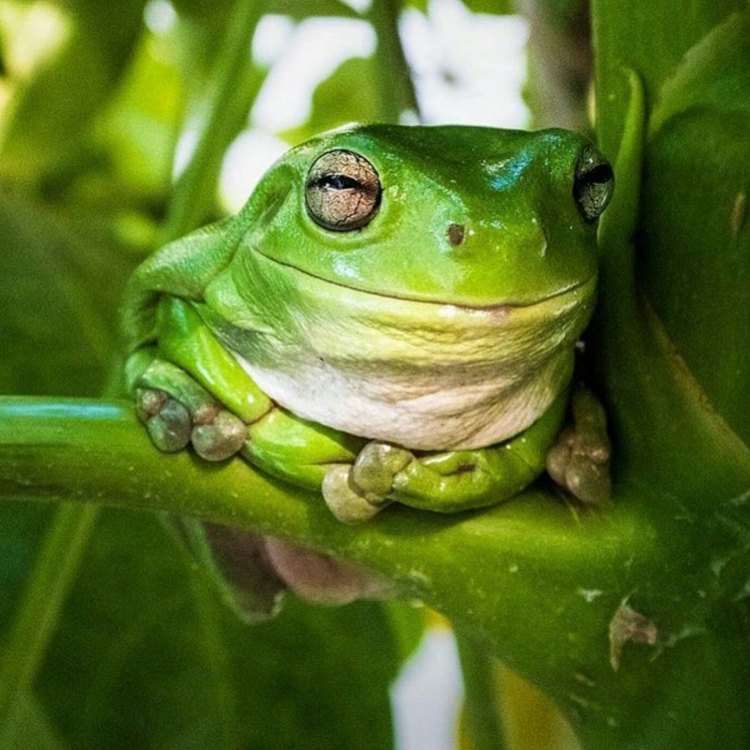
Green Frog
- Adult Size: 2.5 - 4 inches (6.4 - 10.2 cm)
- Average Lifespan: 3 - 5 years
- Reproduction: Sexual
- Reproductive Behavior: Males engage in calling to attract females during mating season
- Sound or Call: Loud, deep, resonant call
- Migration Pattern: Non-migratory
- Social Groups: Solitary
- Behavior: Active during the day, spend time both in water and on land
- Threats: Habitat loss, pollution, invasive species, disease
- Conservation Status: Least Concern
- Impact on Ecosystem: Prey on insects and other small invertebrates, serve as prey for larger predators
- Human Use: Frequently used in dissection labs for educational purposes
- Distinctive Features: Large, powerful hind legs; long, webbed toes
- Interesting Facts: Green Frogs are excellent jumpers and swimmers
- Predator: Birds, snakes, large fish, turtles
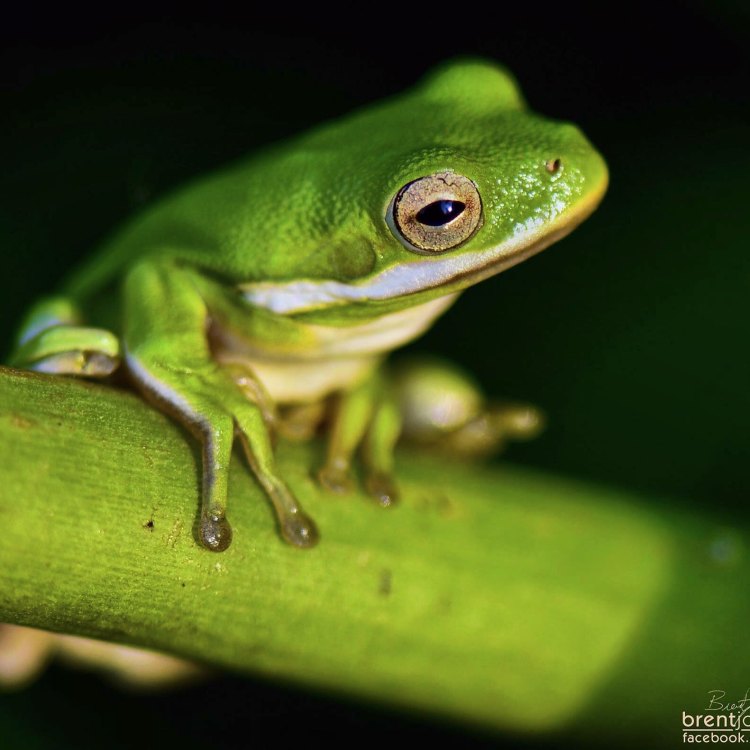
Lithobates clamitans
The Versatile and Vibrant Green Frog: A Delightful Amphibian
From the vibrant hues of a tropical toucan to the majestic stature of a lion, the animal kingdom is filled with fascinating creatures that capture our imagination and curiosity. One such creature is the green frog, a small and unassuming amphibian that can be found in various habitats around the world. Despite its modest appearance, this versatile and vibrant species has many interesting characteristics that make it a noteworthy and valuable part of our ecosystem.The green frog, also known as the American bullfrog, is a medium-sized amphibian that can grow to be 2 PeaceOfAnimals.Com.5 to 4 inches (6.4-10.2 cm) in length. They have a mottled green and brown coloration, with prominent dark spots and a white or cream-colored belly. As their name suggests, these frogs are typically green in color, but can also range from shades of olive to brown depending on their environment and temperature. They have a stout body with large, powerful hind legs and long, webbed toes, making them excellent jumpers and swimmers.
These amphibians have an average lifespan of 3-5 years, but some individuals have been known to live up to 12 years in captivity. Their reproductive behavior is sexual, meaning they reproduce through the union of male and female sex cells. During mating season, which typically occurs from May to August, male green frogs engage in calling to attract females Golden Crowned Kinglet. Their calls are loud, deep, and resonant, often compared to the sound of a plucked banjo string. These calls can be heard up to 1 mile away, making it easier for females to locate potential mates. Once a female selects a mate, she will lay hundreds of eggs in shallow water, which will hatch into tadpoles after 5-14 days.
Green frogs are non-migratory, meaning they do not travel long distances throughout the year. They tend to stay in the same habitat, as long as it provides suitable conditions for their survival. These frogs are solitary creatures, meaning they prefer to live and hunt alone. However, during the breeding season, they can be found in groups near water bodies.
These amphibians are active during the day and spend most of their time both in water and on land. They are skilled hunters and feed on a variety of insects and other small invertebrates, serving as important predators in their ecosystem. At the same time, they are also prey for larger predators such as birds, snakes, large fish, and turtles, making them an essential part of the food chain.
While green frogs are not considered an endangered species, they do face several threats that can impact their survival. Habitat loss and fragmentation, caused by human activities such as land development and deforestation, is a significant threat to their population. Pollution is another threat to their survival, particularly water pollution, which can harm their health and reduce their food sources. Additionally, invasive species, such as bullfrogs and fish, can also harm green frogs by competing for resources or even preying on them. Diseases, such as the chytrid fungus, have also been identified as a threat to their population in some regions.
Despite these threats, the conservation status of green frogs is currently listed as "Least Concern" by the International Union for Conservation of Nature (IUCN). However, it is crucial to monitor their population and address any issues that may arise to ensure their survival and the balance of their ecosystem.
Green frogs also have a significant impact on the ecosystem in which they live. As mentioned earlier, they serve as predators for insects and other small invertebrates, helping to control their populations. They also provide a food source for larger predators. Additionally, their tadpoles help to keep waterways clean by feeding on algae and other organic matter, making them important contributors to the health of their habitats.
Aside from their ecological importance, green frogs have also been used for human purposes. They are a frequent target for dissection in educational labs, providing students with a hands-on learning experience about their anatomy and biology. However, this practice has sparked controversy, as some argue that it can lead to a decrease in their population and that there are alternative ways to teach students about amphibians.
In conclusion, the green frog is a versatile and vibrant species that plays an essential role in our ecosystem. From their distinct appearance to their unique reproductive behaviors and ecological importance, these frogs have many fascinating characteristics that make them a delightful addition to the animal kingdom. While facing threats to their survival, it is crucial to recognize and appreciate the value of these amphibians and take steps to ensure their continued existence for generations to come. Next time you come across a green frog, take a moment to observe and appreciate their beauty and significance in our natural world.

The Mighty Green Frog: A Fascinating Amphibian of North America
Disclaimer: The content provided is for informational purposes only. We cannot guarantee the accuracy of the information on this page 100%. All information provided here may change without prior notice.

